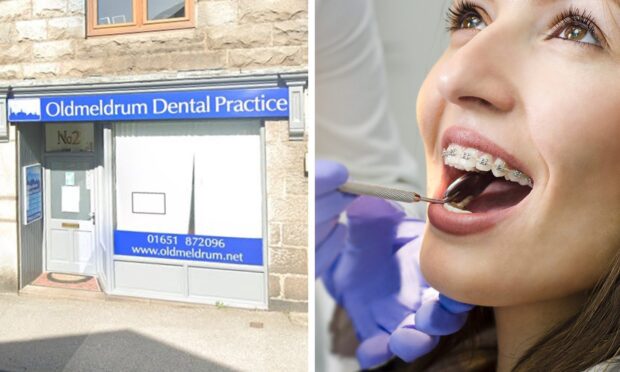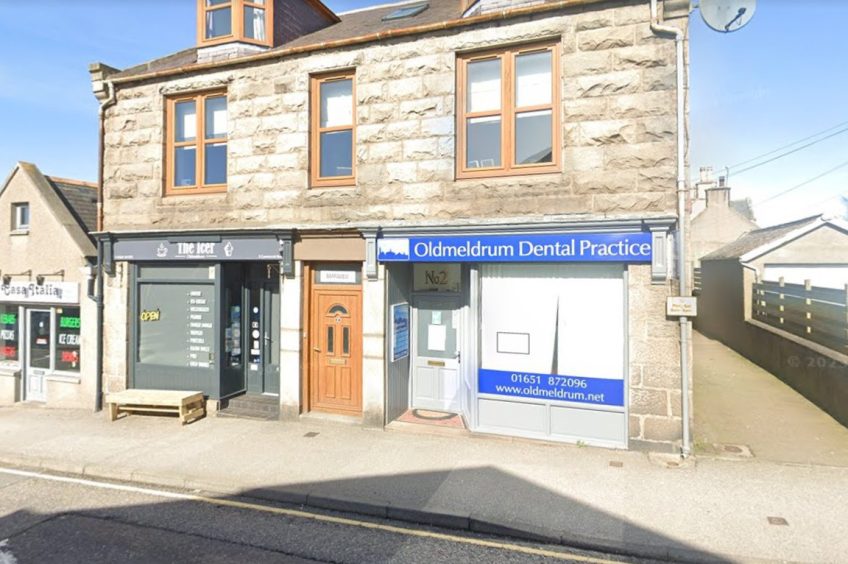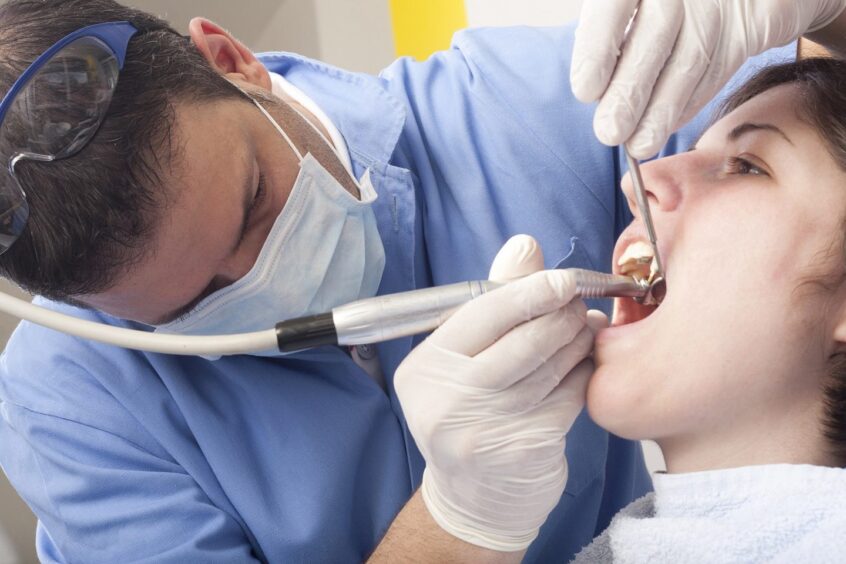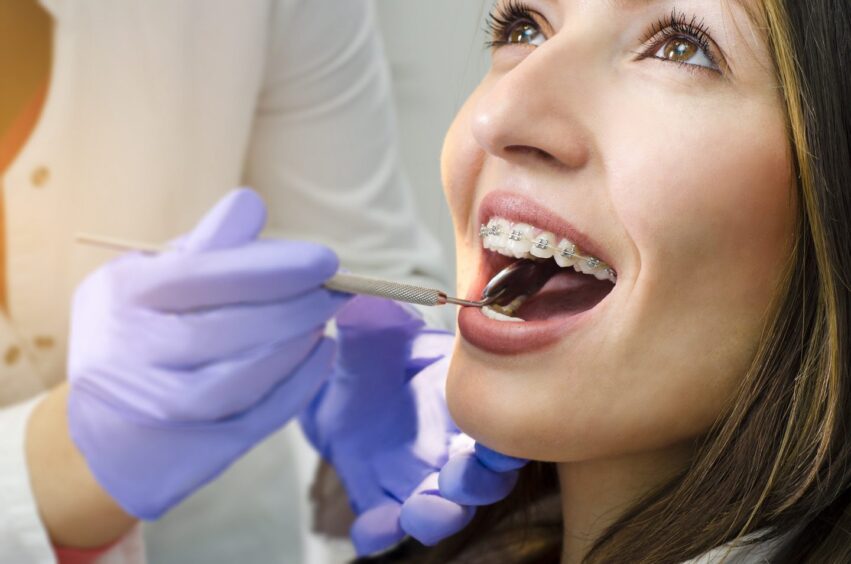An Oldmeldrum dental practice said it will end its NHS treatments for patients 26 and older, despite a new government scheme aimed at safeguarding free and subsidised dental care.
The new scheme, which comes into force on Wednesday November 1, raises the fees dentists are paid for carrying out NHS treatment.
The aim is to help reverse a decrease in the time Scottish dentists allocate to NHS patients compared to more profitable private work.
However, Oldmeldrum Dental Practice told patients in a letter this month it intends to go fully private for adult patients.
“In order to meet the increasing standards, maintain the quality of equipment and retain our excellent staff we intend that the practice moves from its predominately private and partial NHS model to a fully private practice,” the letter said.
The changes don’t affect existing NHS appointments up June next year, nor do they affect child and young adult patients.
Keeping reading to find out:
- Why the new payment scheme has had a lukewarm response from dentists
- What an Aberdeenshire dentist thinks of the changes
- What the changes mean for you
A ‘discredited low margin/high volume model’?
The new payment scheme has already proven controversial.
The Scottish Government says the fee hikes will boost incentives for NHS dental treatments while also allowing greater autonomy. The higher fees will be partly offset by price increases for NHS patients that contribute towards the cost of their care.
But dentists, who are facing increased costs and staffing issues post-pandemic, have given it a lukewarm response.
The British Dental Association (BDA) in Scotland warned the new scheme does not go far enough. It said questions remain over whether it will “halt the exodus of dentists from NHS”.
Last week, the BDA accused the government of sticking to a “discredited low margin/high volume model that has proved incompatible with work post-pandemic”.
A stark choice for dentists
An Aberdeenshire dentist, who wished to remain anonymous, argued to the Press and Journal that the new payment scheme leaves dentists out of pocket due to rising staffing and materials costs.
The dentist believes practices face a stark choice — go fully private or risk going out of business.
“We’re at the stage now, where if somebody wanted a denture on the NHS, you’d have to go to the cheapest lab you could find, and even then their lab fees would be about the same as what we would get paid for the actual denture [by the NHS].
“That doesn’t take in the cost of us having a receptionist or nurse, the dentist’s time and equipment costs.”
According to the dentist we spoke to, more practices could consider turning their backs on NHS work, making it even harder for people to access free or subsidised treatment.
In Scotland, only patients under 26, pregnant women and mothers who are breastfeeding get free NHS dental care, though support is available for those on low incomes.
About 60% of patients get subsidised care.
“The [practices] I’ve spoken to said they will let [NHS work] drift over the next couple of years, which probably means that they will do less and less over the next year or so,” the Aberdeenshire dentist said.
An exodus from NHS dental work
Asked what will happen to patients that can’t afford private treatment, the dentist said it is up to the Scottish Government.
“The bottom line is, if [the government] could find a better working structure then maybe dentists wouldn’t have to move away.”
Scottish dentists are already moving away from NHS treatment.
A BDA survey in March showed that NHS activity in Scotland was 30% lower than pre-pandemic levels.
In the same survey, 83% of Scottish dentists said they are planning to reduce the time they spend on NHS work.
Fees ‘just one element’ of NHS dental reform, says Scot Gov
A Scottish Government spokesperson said it invests more than £400 million in dentistry each year and the new NHS fee system reflects “the increased costs of modern dentistry”.
“While reform introduces new fees, these remain just one element of our blended payment model and dentists will continue to receive capitation and allowance payments for delivery of NHS services,” the spokesperson added while also pointing to previous changes such as an enhanced examination that began in April 2022.
“We understand that in certain areas, NHS dental access is challenging, and we are continuing to work closely with the NHS board to ensure that it has the necessary support to offer continuity of NHS care to patients.”
What will the changes mean for me?
If you are part of the 60% of NHS patients aged 26 and over that contribute towards the cost of your NHS dental treatment, you will start paying more from November 1.
For example, a patient receiving a single surface filling will pay £12.72 instead of the current £8.80. A single tooth extraction will cost £28.84 instead of £14.76. A basic acrylic denture will increase from £70 to £117.
The 40% that receive free care will be unaffected.
There are also changes to free check-ups, including for people under 26 years of age.
At the moment, patients are entitled to a free dental check-up every six months. As of November 1, that will change to every 12 – 24 months depending on how at-risk your teeth and gums are.
Some patients who are deemed serious will still get six-month check-ups.
The change aims to free up more time for dentists to carry out NHS work.



